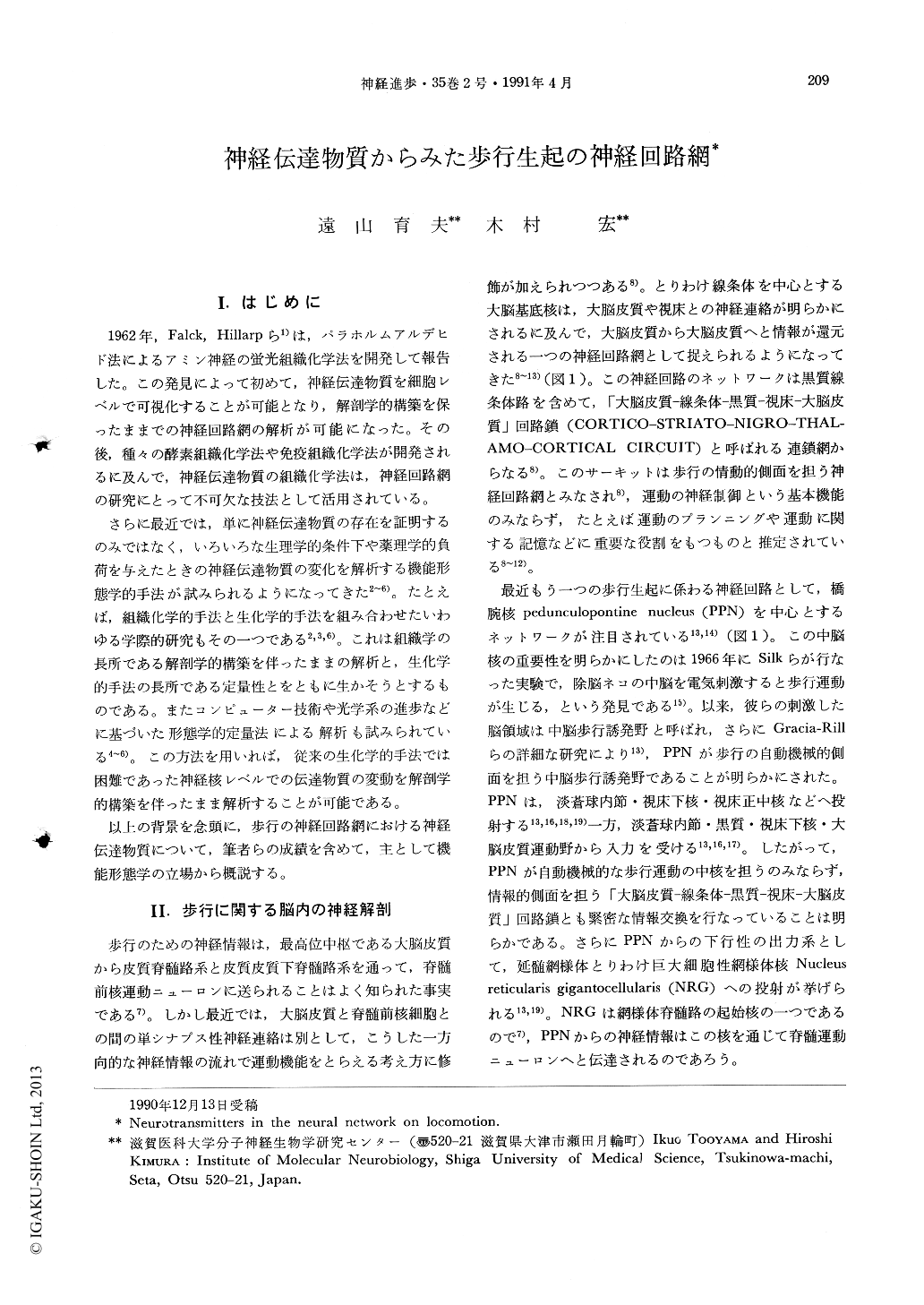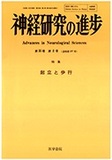Japanese
English
- 有料閲覧
- Abstract 文献概要
- 1ページ目 Look Inside
I.はじめに
1962年,Falck,Hillarpら1)は,パラホルムアルデヒド法によるアミン神経の蛍光組織化学法を開発して報告した。この発見によって初めて,神経伝達物質を細胞レベルで可視化することが可能となり,解剖学的構築を保ったままでの神経回路網の解析が可能になった。その後,種々の酵素組織化学法や免疫組織化学法が開発されるに及んで,神経伝達物質の組織化学法は,神経回路網の研究にとって不可欠な技法として活用されている。
さらに最近では,単に神経伝達物質の存在を証明するのみではなく,いろいろな生理学的条件下や薬理学的負荷を与えたときの神経伝達物質の変化を解析する機能形態学的手法が試みられるようになってきた2~6)。たとえば,組織化学的手法と生化学的手法を組み合わせたいわゆる学際的研究もその一つである2,3,6)。これは組織学の長所である解剖学的構築を伴ったままの解析と,生化学的手法の長所である定量性とをともに生かそうとするものである。またコンピューター技術や光学系の進歩などに基づいた形態学的定量法による解析も試みられている4~6)。この方法を用いれば,従来の生化学的手法では困難であった神経核レベルでの伝達物質の変動を解剖学的構築を伴ったまま解析することが可能である。
This review highlights new findings on neurotransmitter organization in the central nervous systemon locomotion. The basal ganglia receive signals from a large part of the neocortex and returns them to the neocortex through the thalamus. This cortico-striato-nigro-thalamo-cortical circuit integrates the neural informations and send them to various areas in the brainstem and spinal cord including the pedunculopontine nucleus which is known to be the mesencephalic locomotor region, as identified physiologically.
The above neural circuit consists of pathways with a variety of neurotransmitters and neuromodulators. McGeer et al. classified them into three categories. The first transmitter type is the amino acids such as glutamate, asparate and GABA. They have virtually all receptors having an ionotrophic action. This means that the amino acids form the basic circuit in the basal ganglia by 'fast' transmission. The second type is amines including acetylcholine. They heve metabolic type receptors. Their action at the receptors is relatively slow in onset and long-lasting, and almost certainly involves second messenger systems. The third type is neuropeptides. They frequently co-exist with other neurotransmitters in various conditions, and work as neuromodulators.

Copyright © 1991, Igaku-Shoin Ltd. All rights reserved.


